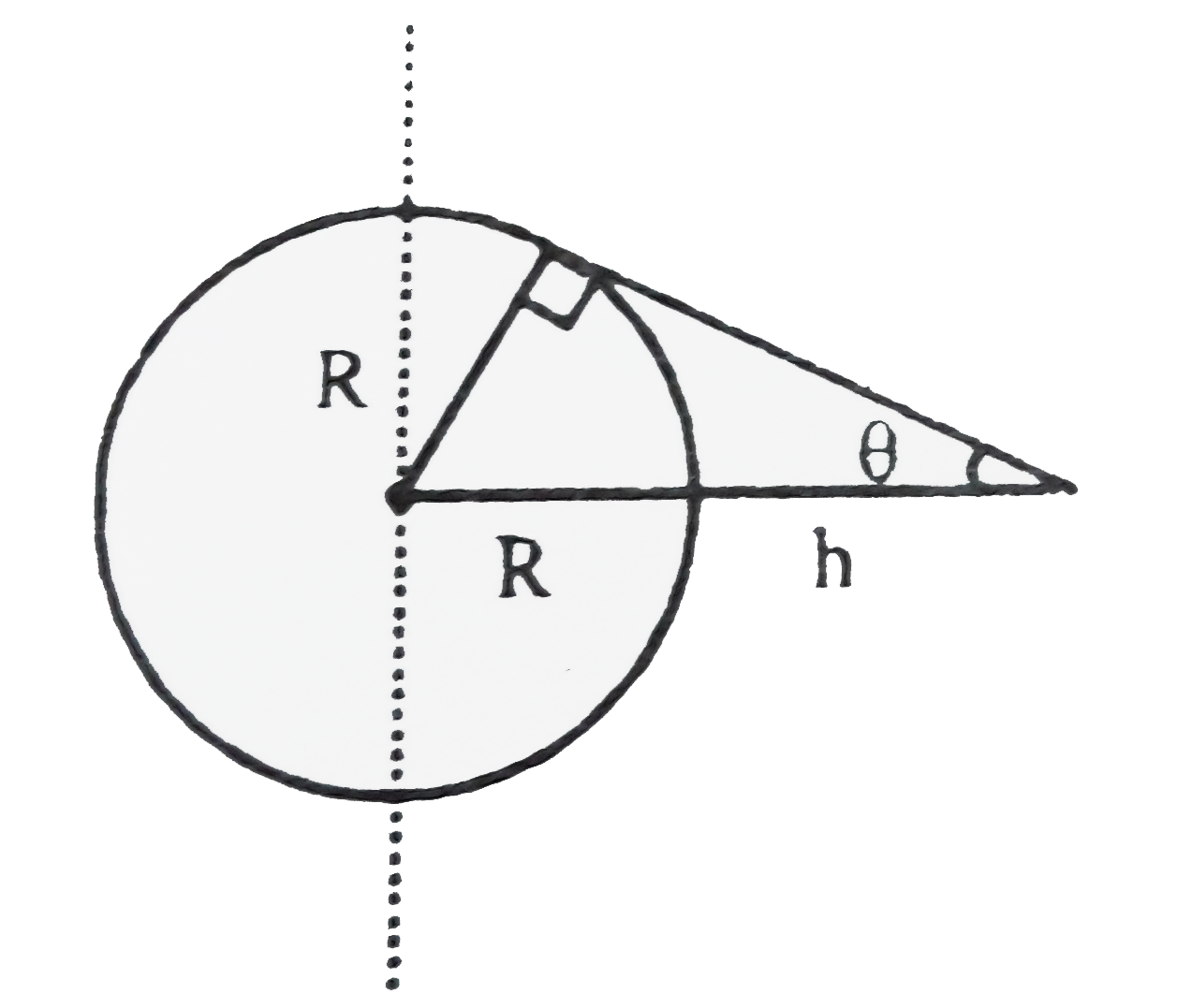Let E be the energy required to raise a satellite to height h above earth's surface and E' be the energy required to put the same satellite into orbit at that height. Then E/E' is equal to
2h(R+2h)
2h(2R+3h)
RR+h
2R2h+R
The correct Answer is:A
E=ΔU=mgh1+h/R=mghR(R+h)
E' = energy of satellite - energy of satellite on surface of earth
=−GMm2(R+h)−(−GMmR)
=mgR2[1R−12(R+h)]=mg(R+2h)R2(R+h)
Now, EE'=2h(R+2h).
Topper's Solved these Questions
- GRAVITATIONBOOK - DC PANDEYCHAPTER - GRAVITATIONEXERCISE - (B) Chapter Exercises
31 Videos
- GRAVITATIONBOOK - DC PANDEYCHAPTER - GRAVITATIONEXERCISE - (C) Chapter Exercises
45 Videos
- GRAVITATIONBOOK - DC PANDEYCHAPTER - GRAVITATIONEXERCISE - Check Point 10.6
20 Videos
- GENERAL PHYSICSBOOK - DC PANDEYCHAPTER - GENERAL PHYSICSEXERCISE - INTEGER_TYPE
2 Videos
- KINEMATICSBOOK - DC PANDEYCHAPTER - KINEMATICSEXERCISE - INTEGER_TYPE
11 Videos
Similar Questions
At what height above Earth's surface is the energy required to lift a satellite to that height equal to the kinetic energy required for the satellite to be in orbit at that height ?(b) For greater heights, which is greater, the energy for lifting or the kinetic energy for orbiting ?
View SolutionThe energy required to take a satelite to a height h above Earth surface (radius of Earth =6.4×103km) is E1 and kinetic energy required for the satellite to be in a circular orbit at this height is E2. The value of h (in km) for which E1 and E2 are equal is
View Solution
Knowledge Check
The ratio of energy required to raise a satellite to a height h above the earth surface to that required to put it into the orbit is
Ah:2RB2h:RCR:hDh:RThe ratio of the energy required to raise a satellite upto a height h above the surface of earth to that the kinetic energy of the satellite into the orbit there is (R=radius of earth)
Ah:RBR:2hC2h:RDR:hThe energy required to take a satellite to a height ‘h’ above Earth surface (radius of Earth=6.4×103 km ) is E1 and kinetic energy required for the satellite to be in a circular orbit at this height is E2. The value of h for which E1 and E2 are equal, is:
A6.4×103 kmB1.6×103 kmC1.28×104 kmD3.2×103km
Choose the correct alternative :
(a) If the zero of the potential energy is at infinity, the total energy of an orbiting satellite is negative of its kinetic/potential energy.
(b) The energy required to rocket an orbiting satellite out of Earth's gravitational influence is more/less than the energy required to project a sationary object at the same height (as the satellite) out of Earth's influence.
View SolutionA geostationary satellite is at a height h above the surface of earth. If earth radius is R-

View SolutionIt the energy required to eject an electron from an atom is Ee and the energy required to eject a nucleon from a nucleus is En then
View SolutionThe ratio of the kinetic energy required to be given to a satellite to escape from the earths gravity to the kinetic energy required to be given to it so that it moves in a circular orbit just above the eart's surface is:
View SolutionThe ratio of the KE required to be given to the satellite to escape the earth's gravitational field to the KE required for maintaining the satellite in circular orbit just above earth's surface is
View Solution
